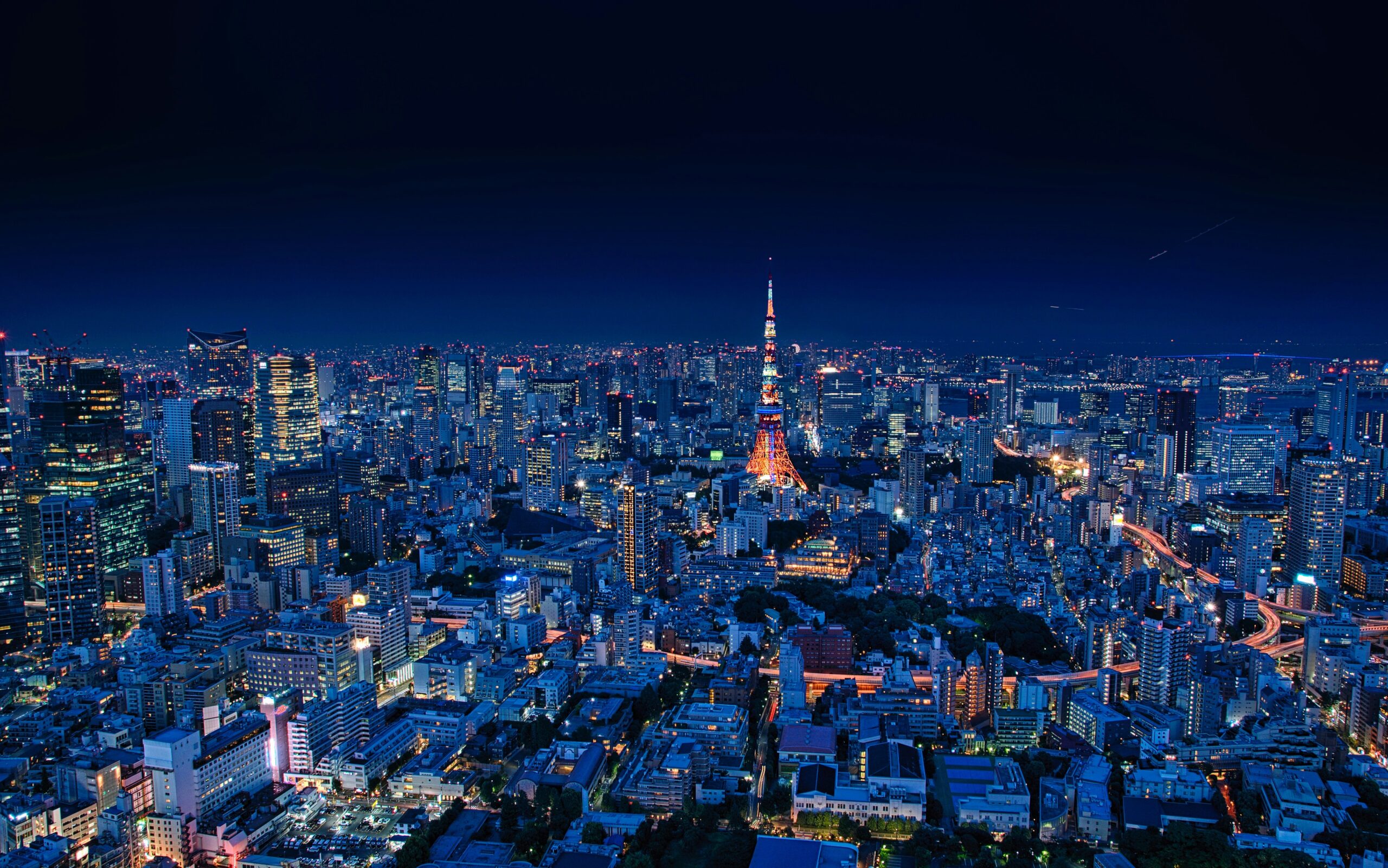Late April in Tokyo. The cherry blossoms had already scattered, replaced by the fresh scent of new leaves in the air. The city, momentarily relieved of its crowds, seemed to breathe with a quieter rhythm.
That morning, I drew open the curtains of my hotel room and froze for a moment. There it was—Tokyo Tower. I’d seen it countless times in photos, but never in person. The real thing stood tall against the pale blue sky, red and white steel stretching upward like a quiet prayer.
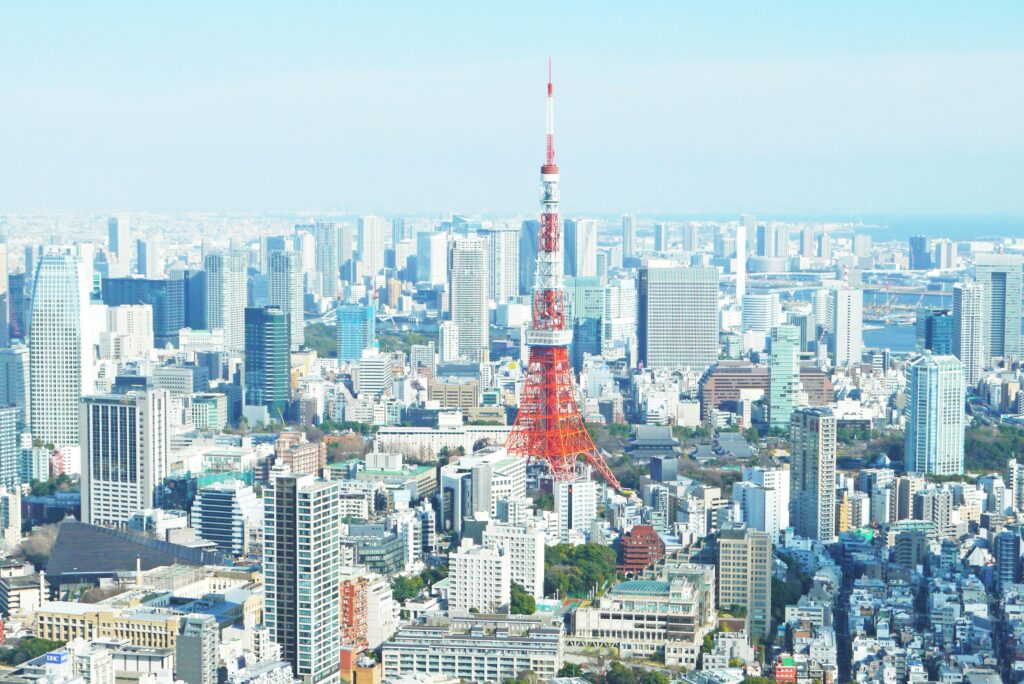
“Built in 1958, wasn’t it?” I recalled vaguely. A postwar symbol of recovery, modeled after the Eiffel Tower. And yet, it felt entirely Japanese—less imposing, more gentle. Unlike the glass and chrome around it, this tower radiated warmth. I couldn’t explain why, but something inside me told me to go. Go and see it up close.
I’d come to Tokyo from Vancouver for work. The project was going well. Meetings were productive. The schedule, tight but efficient. But each day passed like a task ticked off a list. I was full—but not fulfilled. A strange hollowness lingered beneath the routine.
So that weekend, I let myself wander. Not to check off sightseeing boxes, but to feel something real.
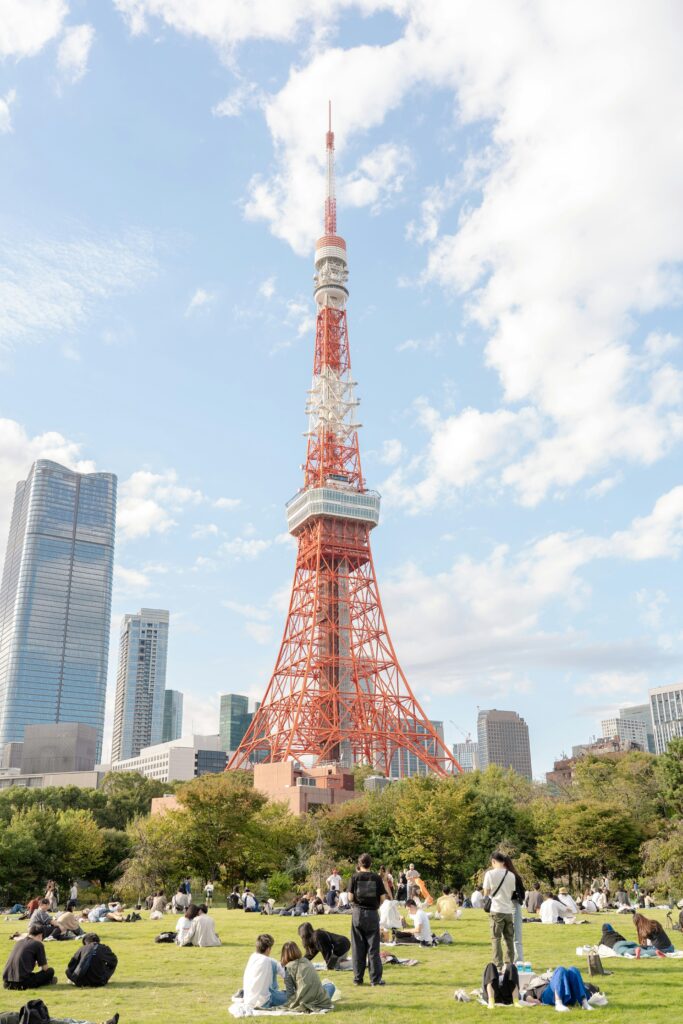
I took the subway, got off near Shiba Park, and there it was—Tokyo Tower, standing just beyond the trees. The red beams glowed vividly under the midday sun, contrasting against the blue sky with breathtaking clarity. It didn’t demand attention. It invited it.
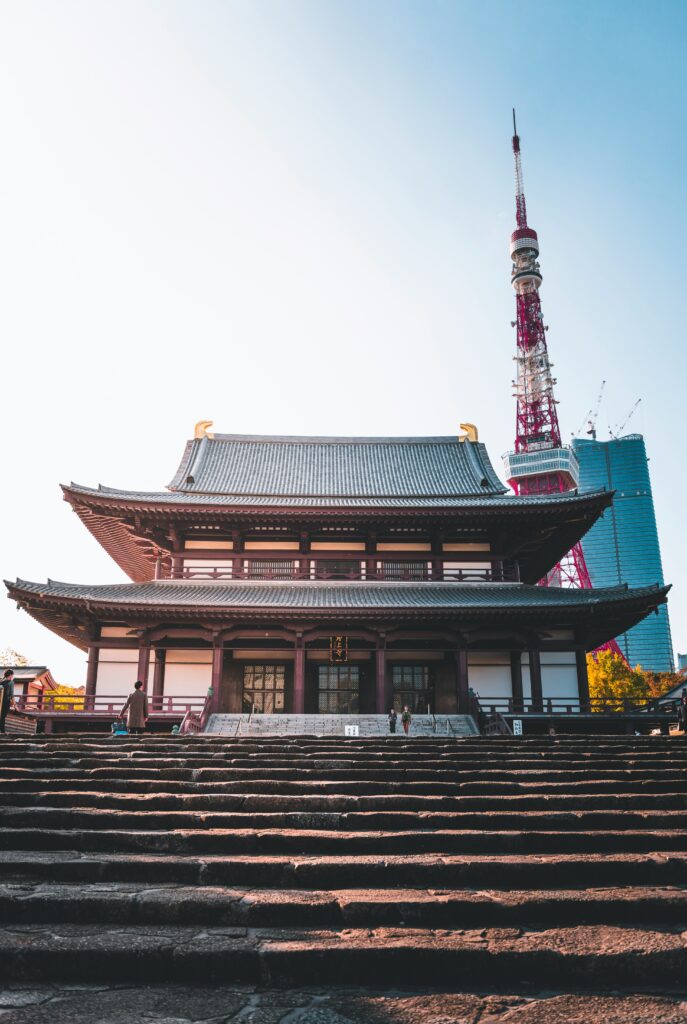
At its base stood Zojo-ji Temple, cradled in greenery. The breeze lifted a white noren curtain at a small teahouse on the temple grounds. I stopped in front, unsure whether to enter.
“Are you by yourself?”
The voice was calm and friendly. I turned to see a woman in a simple, elegant kimono, holding a wooden tray. She looked to be about my age—perhaps slightly older. Her eyes were warm, her posture composed.
“This time of year, the garden is especially beautiful,” she said. “Would you like to rest for a moment?”
I nodded and sat at a wooden table beneath the trees. She returned with a cup of roasted green tea and a small dish of matcha warabi mochi—a soft, translucent jelly dusted with green tea powder, resting on a bamboo leaf. It glistened in the dappled sunlight, cool and inviting.
“I’ve always been curious about Tokyo Tower,” I said. “It’s my first time seeing it, but I’m drawn to it for some reason.”
She looked off toward the tower and smiled gently.
“It’s strange, isn’t it? It feels like everyone’s wishes gather there. In joy, in sorrow, across eras—Showa, Heisei, Reiwa—people have always looked up to it.”
Her words landed softly, like petals in my chest. Maybe I, too, had been carrying a quiet wish—one I hadn’t dared to name.
A short walk from the tower brought me to Atago Shrine, hidden atop a steep stone staircase famously known as the “Stairway of Success.” Climbing it was no small task. My legs ached by the halfway point, but something pushed me upward.
At the top, the city seemed to vanish. Birds chirped. Wind rustled the leaves. It was hard to believe this serenity existed in the middle of Tokyo.
I sat on a bench to catch my breath. A man in a suit settled next to me, loosening his tie.
“Quite the climb, huh?”
He smiled through rimmed glasses. Late 40s, perhaps. Calm eyes. A bit weary, but kind.
“You come here often?” I asked.
“When things get overwhelming at work,” he said. “There’s something grounding about this place. Being high up, yet feeling still.”
We spoke for a while. He worked in publishing and still believed in the power of print.
“When a few words on a page can move someone, even just a little—that’s when it all feels worth it.”
His conviction struck a chord. My own job was all targets and metrics. But his quiet pride reminded me that impact can’t always be measured.
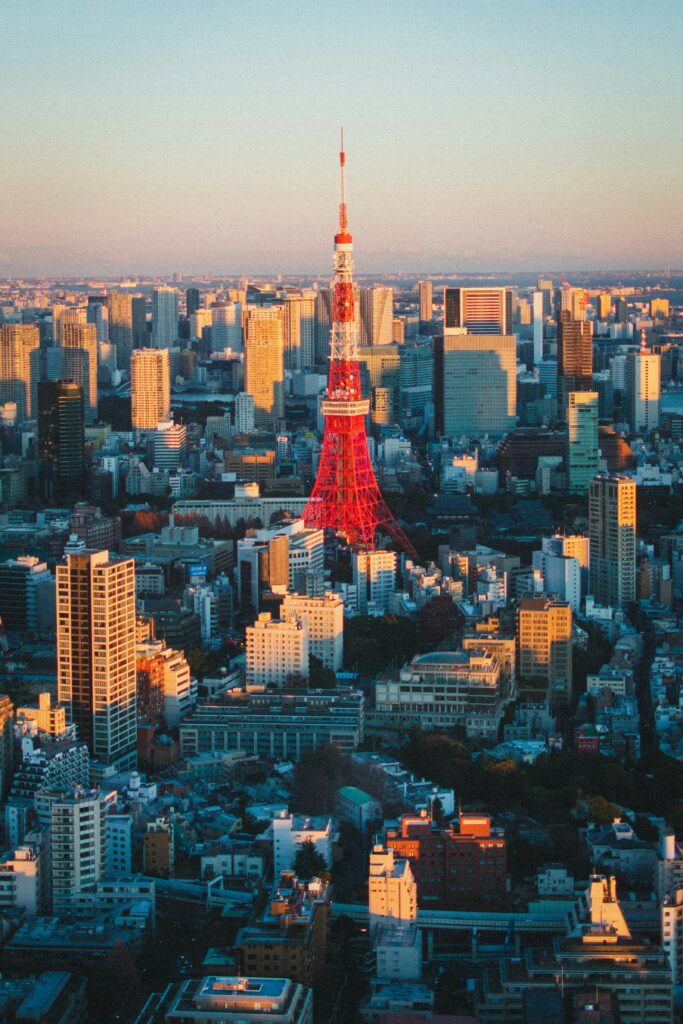
That evening, I went up to the observation deck of Tokyo Tower. The sun was sinking, casting the city in molten gold. Through the glass, the skyline stretched endlessly, dotted with buildings glowing in twilight.
A child laughed somewhere behind me. A couple pointed toward the silhouette of Mount Fuji in the distance. The scene felt both vast and intimate.
As night fell, the tower slowly lit up. A gentle orange glow crept along its steel frame, wrapping it in warmth. It wasn’t a harsh, dazzling light. It was calm. Reassuring.
Back on the ground, I stood for a while, looking up. The tower seemed less like a monument and more like a quiet guardian—watching over the city, listening to its stories.
I ended the day at a small café nearby. The exterior was wooden, minimal, and bathed in amber light. Inside, soft floral arrangements rested on the counter, and the air smelled faintly of toasted rice.
I ordered grilled salmon marinated in fermented miso, served with bamboo shoots and rice. It was earthy, delicate, and utterly satisfying. No music played. Just the sound of chopsticks, quiet conversation, and spring settling in for the night.
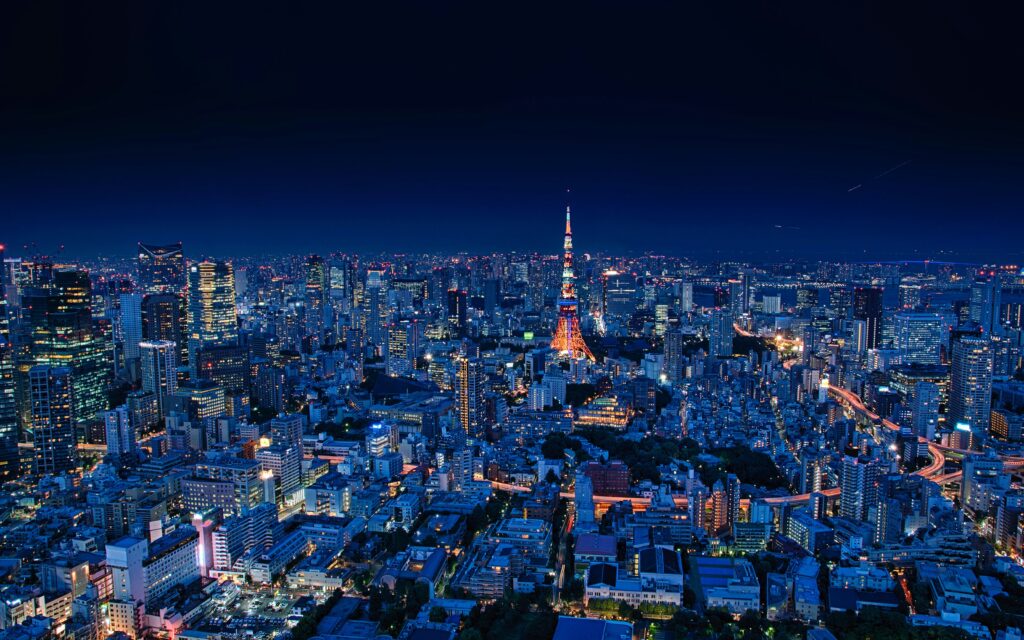
Looking back, I finally understood what had drawn me to Tokyo Tower.
It wasn’t just the design or the history. It was the way it stood through time—holding people’s silent wishes, generation after generation. It didn’t shout for attention. It simply endured.
Travel, I realized, isn’t always about going far. Sometimes, it’s about seeing what was already there—with clearer eyes. Discovering beauty that had been patiently waiting.
And in the soft glow of Tokyo Tower, something inside me lit up too.
Something New Travel

